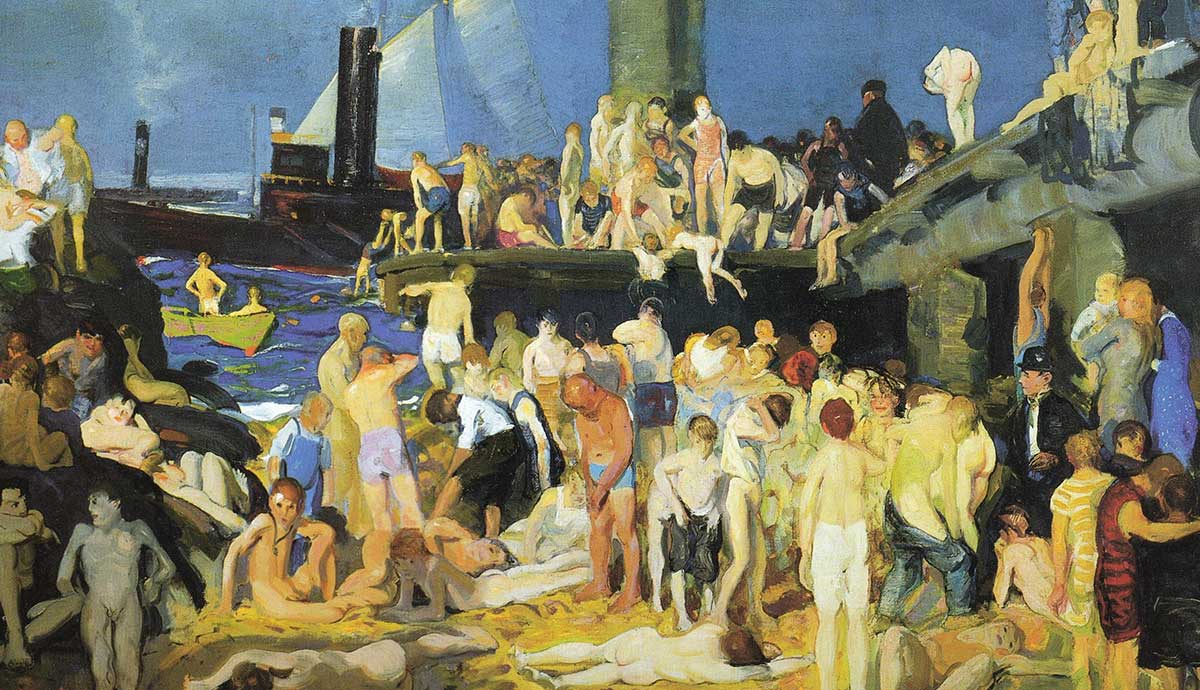
Ashcan art is a captivating movement that emerged in the early 20th century, focusing on the gritty realities of urban life. But what makes it so intriguing? Ashcan artists broke away from traditional, idealized portrayals, choosing instead to depict the raw, unfiltered essence of everyday scenes. This movement, led by artists like Robert Henri and George Bellows, aimed to capture the spirit of the streets, tenements, and working-class neighborhoods. Through bold brushstrokes and a muted color palette, they brought attention to the overlooked aspects of society. Why did they choose such subjects? Their goal was to reflect the true American experience, warts and all. This approach not only challenged the art norms of their time but also paved the way for future generations to explore more diverse and authentic themes.
What is Ashcan Art?
Ashcan Art refers to a movement in American art during the early 20th century. It focused on portraying the gritty reality of urban life. Artists in this movement aimed to depict everyday scenes with honesty and raw emotion.
- The Ashcan School emerged in the early 1900s, primarily in New York City.
- It was a reaction against the idealized and romanticized art of the time.
- The movement's name comes from a critic who described the art as "ash can" due to its focus on gritty urban scenes.
- Ashcan artists often depicted scenes of poverty, working-class life, and the bustling city streets.
- The movement was part of a larger trend towards realism in art.
Key Figures in the Ashcan School
Several artists were central to the Ashcan School. Their works and philosophies shaped the movement and left a lasting impact on American art.
- Robert Henri is considered the leader of the Ashcan School.
- Henri encouraged his students to paint everyday life with honesty and vigor.
- George Bellows is known for his dynamic and often violent depictions of urban life.
- John Sloan captured the daily lives of New Yorkers with a keen eye for detail.
- Everett Shinn focused on the theater and street scenes, bringing a dramatic flair to his work.
Themes and Subjects in Ashcan Art
Ashcan artists chose subjects that were often overlooked by other artists. They aimed to show the beauty and complexity of everyday life.
- Street scenes were a common subject, capturing the hustle and bustle of city life.
- Many works depicted the lives of immigrants and the working class.
- The interiors of tenements and crowded apartments were frequently portrayed.
- Ashcan artists also painted scenes of leisure, such as parks and beaches.
- The movement highlighted the contrasts and contradictions of urban life.
Techniques and Styles
The Ashcan School had a distinctive style that set it apart from other art movements of the time. Their techniques emphasized realism and immediacy.
- Ashcan artists used loose, quick brushstrokes to capture the energy of their subjects.
- They often worked in dark, muted colors to reflect the somber mood of their scenes.
- Many Ashcan paintings have a sketch-like quality, emphasizing spontaneity.
- The artists frequently painted en plein air, or outdoors, to capture the immediacy of their surroundings.
- They used thick layers of paint to create texture and depth in their works.
Influence and Legacy
The Ashcan School had a significant impact on American art. Its influence can still be seen in contemporary works.
- The movement paved the way for later American realist artists.
- It challenged the art establishment and broadened the scope of acceptable subjects in art.
- Ashcan artists influenced the development of social realism in the 1930s.
- The movement's focus on urban life inspired later generations of artists.
- Many Ashcan works are now considered masterpieces of American art.
Notable Works
Several paintings and drawings from the Ashcan School have become iconic. These works exemplify the movement's themes and techniques.
- "Cliff Dwellers" by George Bellows depicts a crowded New York City street scene.
- "McSorley's Bar" by John Sloan captures the lively atmosphere of a famous New York tavern.
- "Snow in New York" by Robert Henri shows a quiet, snow-covered city street.
- "The Shoppers" by Everett Shinn portrays women shopping in a bustling department store.
- "Both Members of This Club" by George Bellows depicts a brutal boxing match, highlighting the raw energy of the sport.
Final Thoughts on Ashcan School
The Ashcan School left a lasting mark on American art. Its artists captured the gritty reality of urban life, breaking away from traditional, idealized subjects. They showed the world that beauty exists in everyday scenes. This movement wasn't just about art; it was a social commentary, reflecting the changing times of the early 20th century. The Ashcan School's legacy lives on, influencing modern artists who seek to portray the world as it is, not as it should be. Their work reminds us that art can be a powerful tool for change, offering a raw, unfiltered look at society. So next time you see a piece from this era, take a moment to appreciate the boldness and honesty it represents. The Ashcan School truly redefined what art could be, making it more relatable and impactful for everyone.
Was this page helpful?
Our commitment to delivering trustworthy and engaging content is at the heart of what we do. Each fact on our site is contributed by real users like you, bringing a wealth of diverse insights and information. To ensure the highest standards of accuracy and reliability, our dedicated editors meticulously review each submission. This process guarantees that the facts we share are not only fascinating but also credible. Trust in our commitment to quality and authenticity as you explore and learn with us.
